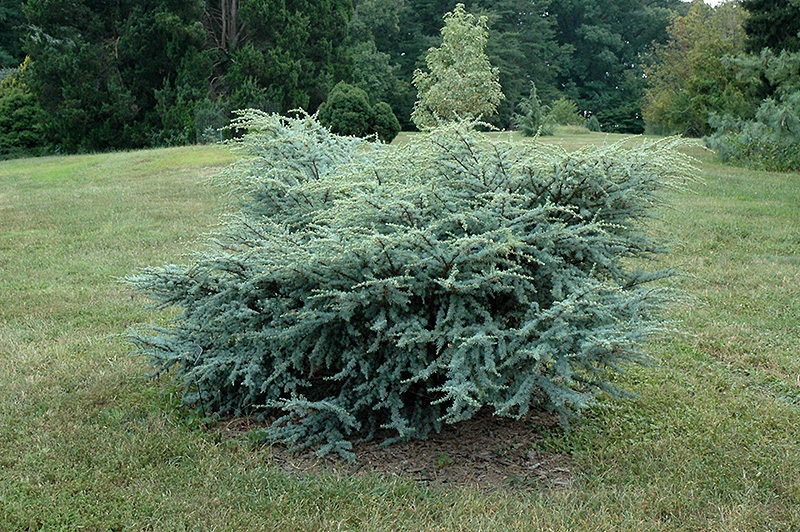Plant Search & Info
Horstmann Blue Atlas Cedar Cedrus atlantica 'Horstmann' Height: 12 feet Spread: 8 feet
Sunlight:
Hardiness Zone: 5b Description: A tremendous, semi-dwarf variety, with a more irregular, upright habit and silvery-blue needles; an excellent choice for smaller landscapes Ornamental Features Horstmann Blue Atlas Cedar is a dwarf conifer which is primarily valued in the landscape or garden for its characteristic tiered habit of growth. It has attractive silvery blue evergreen foliage. The needles are highly ornamental and remain silvery blue throughout the winter. Landscape Attributes Horstmann Blue Atlas Cedar is an open multi-stemmed evergreen shrub with a stunning habit of growth which features almost oriental horizontally-tiered branches. Its relatively fine texture sets it apart from other landscape plants with less refined foliage. This is a relatively low maintenance shrub, and usually looks its best without pruning, although it will tolerate pruning. Deer don't particularly care for this plant and will usually leave it alone in favor of tastier treats. It has no significant negative characteristics. Horstmann Blue Atlas Cedar is recommended for the following landscape applications; Planting & Growing Horstmann Blue Atlas Cedar will grow to be about 12 feet tall at maturity, with a spread of 8 feet. It tends to fill out right to the ground and therefore doesn't necessarily require facer plants in front, and is suitable for planting under power lines. It grows at a slow rate, and under ideal conditions can be expected to live for 60 years or more. This shrub should only be grown in full sunlight. It is very adaptable to both dry and moist growing conditions, but will not tolerate any standing water. It is not particular as to soil type or pH. It is somewhat tolerant of urban pollution, and will benefit from being planted in a relatively sheltered location. Consider applying a thick mulch around the root zone in winter to protect it in exposed locations or colder microclimates. This is a selected variety of a species not originally from North America.![]()
![]()
![]()
![]()
![]()
![]()
![]()
![]()
![]()
![]()
![]()
![]()
![]()




